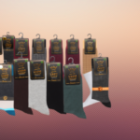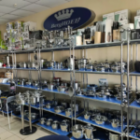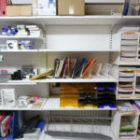When it comes to purchasing remaining goods or stock lots, it’s important to identify high-quality items that will sell well. Not all remaining goods are created equal, and it’s important to evaluate each item carefully before making a purchase. In this post, we’ll go over some tips for identifying high-quality remaining goods to add to your inventory.
- Look for Name Brand Products
One way to identify high-quality remaining goods is to look for name brand products. These products are often made with higher quality materials and have a reputation for being reliable. Additionally, name brand products tend to have a strong resale value, which can make them a smart investment.
- Check for Imperfections
While remaining goods may have minor imperfections, it’s important to evaluate these imperfections carefully. Some imperfections, such as small scratches or dents, may not significantly impact the quality of the item. However, other imperfections, such as torn fabric or missing parts, may render the item unsellable. Make sure to thoroughly inspect each item before making a purchase.
- Consider the Market
Another important factor to consider when evaluating remaining goods is the market demand. Just because an item is high-quality doesn’t mean it will sell well. Before making a purchase, do some research on the market demand for the item. Look at trends and consider the target audience for the product.
- Check for Expiration Dates
If you’re purchasing remaining goods in the food or beauty industries, it’s important to check for expiration dates. Expired products can be harmful to consumers and may not be legal to sell. Make sure to carefully check the expiration date of each item before making a purchase.
- Research the Manufacturer
Before making a purchase, do some research on the manufacturer of the item. Look at their reputation and consider their production processes. If the manufacturer has a reputation for producing high-quality products, it’s more likely that the remaining goods they are selling will be of a similar quality.
- Inspect the Packaging
The packaging of an item can also give you an indication of its quality. Make sure to inspect the packaging carefully for any signs of damage or wear. If the packaging is in poor condition, it may indicate that the item inside is also in poor condition.
In conclusion, identifying high-quality remaining goods to add to your inventory requires careful evaluation and research. By looking for name brand products, checking for imperfections, considering the market, checking for expiration dates, researching the manufacturer, and inspecting the packaging, you can make informed purchasing decisions and build a successful business selling remaining goods.







